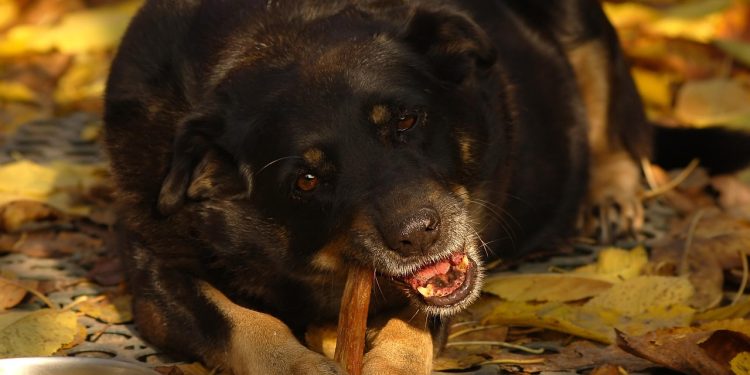Ensuring your pet receives proper nutrition is one of the most important responsibilities of a pet owner. Balanced nutrition not only supports physical health but also enhances your pet’s energy levels, coat quality, and overall well-being. Whether you have a dog, cat, or small animal, understanding their dietary needs is essential for a happy and healthy life. Here’s a detailed guide to pet nutrition, including the key principles, specific dietary requirements, and common mistakes to avoid.
The Importance of Proper Nutrition
Physical Health
A well-balanced diet supports growth, strengthens the immune system, and prevents diseases like obesity, diabetes, and heart conditions.
Mental and Emotional Well-Being
Proper nutrition influences your pet’s mood and behavior. A nutrient-rich diet can reduce anxiety, improve focus, and encourage playfulness.
Longevity
Pets that receive adequate nutrition are more likely to enjoy a longer, healthier life.
Key Components of a Balanced Diet
Proteins
- Role: Essential for muscle development, tissue repair, and overall growth.
- Sources: Chicken, beef, fish, eggs, and plant-based proteins (e.g., lentils or peas).
Carbohydrates
- Role: Provide energy for daily activities.
- Sources: Rice, oats, sweet potatoes, and barley.
- Consideration: While dogs can benefit from carbohydrates, cats, being obligate carnivores, require minimal amounts.
Fats
- Role: Support healthy skin and coat, aid in nutrient absorption, and provide concentrated energy.
- Sources: Fish oil, flaxseed, and animal fats.
Vitamins and Minerals
- Role: Essential for bone health, immune function, and metabolic processes.
- Sources: Vegetables, fruits, and fortified pet foods.
- Examples:
- Calcium: Supports strong bones and teeth.
- Vitamin A: Promotes healthy vision.
- Zinc: Enhances skin and coat quality.
Water
- Role: Vital for digestion, temperature regulation, and overall cellular function.
- Tip: Ensure fresh, clean water is always available to your pet.
Species-Specific Nutritional Needs
Dogs
- Dietary Basics:
- Omnivorous by nature, dogs thrive on a mix of proteins, fats, and carbohydrates.
- Commercial dog foods are designed to provide balanced nutrition, but quality varies.
- Portion Control:
- Portion sizes depend on age, size, activity level, and breed.
- Overfeeding can lead to obesity, while underfeeding can cause malnutrition.
- Life Stages:
- Puppies: Require higher protein and fat content for growth.
- Adults: Balanced maintenance diets with controlled calories.
- Seniors: Diets with lower calories and added joint-support nutrients like glucosamine.
- Foods to Avoid:
- Chocolate, onions, garlic, grapes, raisins, and foods with xylitol (a toxic sweetener).
Cats
- Dietary Basics:
- Obligate carnivores, cats rely on animal-based proteins for essential nutrients like taurine and arachidonic acid.
- They require fewer carbohydrates compared to dogs.
- Hydration:
- Cats often have a low thirst drive, so wet food can help increase water intake.
- Life Stages:
- Kittens: High-calorie diets with ample protein and fat for rapid growth.
- Adults: Moderate-calorie diets to maintain weight.
- Seniors: Diets that support kidney health and joint function.
- Foods to Avoid:
- Onions, garlic, raw eggs, raw fish, and bones.
Small Animals (Rabbits, Guinea Pigs, etc.)
- Dietary Basics:
- High-fiber diets are essential to support digestion and prevent obesity.
- Fresh hay (e.g., timothy or orchard grass) should form the bulk of their diet.
- Supplemental Foods:
- Leafy greens (e.g., kale, spinach) and limited fruits as treats.
- Guinea pigs require a daily source of vitamin C, as they cannot produce it naturally.
- Foods to Avoid:
- Sugary treats, iceberg lettuce, and foods high in fat or starch.
Choosing the Right Pet Food
Commercial Diets
- Dry Food:
- Affordable and convenient but may lack hydration.
- Ensure it is free from fillers and artificial additives.
- Wet Food:
- Higher moisture content, ideal for pets needing extra hydration.
- Typically more expensive but often more palatable.
- Raw Diets:
- Mimics natural feeding but requires careful preparation to ensure balance and safety.
Reading Labels
- Look for a named protein source (e.g., chicken, beef) as the first ingredient.
- Avoid foods with excessive fillers like corn, soy, or by-products.
- Ensure the food meets AAFCO (Association of American Feed Control Officials) nutritional standards.
Homemade Diets
Benefits
- Allows control over ingredients and quality.
- Useful for pets with specific dietary sensitivities.
Considerations
- Consult a veterinarian or pet nutritionist to ensure balance.
- Include all essential nutrients and avoid harmful ingredients.
Sample Recipe (For Dogs):
- 50% protein (e.g., cooked chicken or turkey).
- 25% vegetables (e.g., carrots, green beans).
- 25% grains (e.g., brown rice or quinoa).
Common Nutritional Mistakes
- Overfeeding:
- Leads to obesity, which increases the risk of heart disease, diabetes, and joint issues.
- Follow feeding guidelines and adjust portions based on your pet’s activity level.
- Underfeeding:
- Results in malnutrition, stunted growth, and weakened immunity.
- Regularly monitor your pet’s weight and body condition.
- Unbalanced Diets:
- Relying solely on homemade meals without proper guidance can lead to nutrient deficiencies.
- Feeding Table Scraps:
- Human foods can be high in fat, salt, and sugar, which are harmful to pets.
- Ignoring Food Allergies:
- Symptoms include itching, ear infections, and gastrointestinal upset.
- Work with your vet to identify and eliminate allergens.
Tips for Feeding Your Pet
- Establish a Routine:
- Feed at consistent times each day to regulate digestion and behavior.
- Measure Portions:
- Use a measuring cup to ensure accurate portions.
- Monitor Weight:
- Regularly weigh your pet and adjust their diet as needed.
- Provide Enrichment:
- Use puzzle feeders or slow feeders to make mealtime engaging.
- Consult Your Veterinarian:
- Regular checkups can help identify and address dietary issues early.
Proper nutrition is a cornerstone of your pet’s health and happiness. By understanding their unique dietary needs, choosing quality food, and avoiding common mistakes, you can ensure your pet thrives at every stage of their life.












